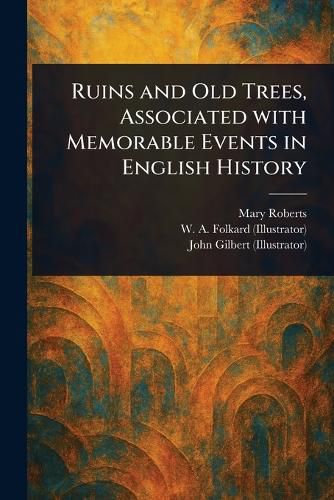Readings Newsletter
Become a Readings Member to make your shopping experience even easier.
Sign in or sign up for free!
You’re not far away from qualifying for FREE standard shipping within Australia
You’ve qualified for FREE standard shipping within Australia
The cart is loading…






This title is printed to order. This book may have been self-published. If so, we cannot guarantee the quality of the content. In the main most books will have gone through the editing process however some may not. We therefore suggest that you be aware of this before ordering this book. If in doubt check either the author or publisher’s details as we are unable to accept any returns unless they are faulty. Please contact us if you have any questions.
Explore the historical tapestry of England through its ancient ruins and venerable trees in Mary Roberts' "Ruins and Old Trees, Associated with Memorable Events in English History." This meticulously prepared edition delves into the profound connections between England's natural landscape and its rich, often turbulent, past.
Journey through historic sites and discover the stories whispered by gnarled branches and crumbling stone. From majestic oaks witnessing pivotal battles to the silent sentinels guarding forgotten castles, Roberts unveils the intimate relationship between nature and significant events in English history.
This book offers a unique perspective on social history, weaving together botanical observations with narratives of the people and places that shaped England. A captivating exploration for anyone interested in English history, nature, or the enduring power of the past, "Ruins and Old Trees" provides a timeless glimpse into the soul of a nation.
This work has been selected by scholars as being culturally important, and is part of the knowledge base of civilization as we know it.
This work is in the public domain in the United States of America, and possibly other nations. Within the United States, you may freely copy and distribute this work, as no entity (individual or corporate) has a copyright on the body of the work.
Scholars believe, and we concur, that this work is important enough to be preserved, reproduced, and made generally available to the public. We appreciate your support of the preservation process, and thank you for being an important part of keeping this knowledge alive and relevant.
$9.00 standard shipping within Australia
FREE standard shipping within Australia for orders over $100.00
Express & International shipping calculated at checkout
This title is printed to order. This book may have been self-published. If so, we cannot guarantee the quality of the content. In the main most books will have gone through the editing process however some may not. We therefore suggest that you be aware of this before ordering this book. If in doubt check either the author or publisher’s details as we are unable to accept any returns unless they are faulty. Please contact us if you have any questions.
Explore the historical tapestry of England through its ancient ruins and venerable trees in Mary Roberts' "Ruins and Old Trees, Associated with Memorable Events in English History." This meticulously prepared edition delves into the profound connections between England's natural landscape and its rich, often turbulent, past.
Journey through historic sites and discover the stories whispered by gnarled branches and crumbling stone. From majestic oaks witnessing pivotal battles to the silent sentinels guarding forgotten castles, Roberts unveils the intimate relationship between nature and significant events in English history.
This book offers a unique perspective on social history, weaving together botanical observations with narratives of the people and places that shaped England. A captivating exploration for anyone interested in English history, nature, or the enduring power of the past, "Ruins and Old Trees" provides a timeless glimpse into the soul of a nation.
This work has been selected by scholars as being culturally important, and is part of the knowledge base of civilization as we know it.
This work is in the public domain in the United States of America, and possibly other nations. Within the United States, you may freely copy and distribute this work, as no entity (individual or corporate) has a copyright on the body of the work.
Scholars believe, and we concur, that this work is important enough to be preserved, reproduced, and made generally available to the public. We appreciate your support of the preservation process, and thank you for being an important part of keeping this knowledge alive and relevant.